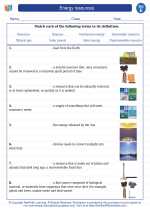Energy Resources
Energy resources are sources of power that can be used to generate heat, electricity, or perform work. There are several types of energy resources, including renewable and non-renewable sources. Understanding the different energy resources and their impact on the environment is an important part of studying science.
Types of Energy Resources
Non-Renewable Energy Resources
- Fossil Fuels: These are fuels formed from the remains of ancient plants and animals. Examples include coal, oil, and natural gas. Fossil fuels are non-renewable and contribute to air pollution and climate change.
- Nuclear Energy: This comes from the splitting of atoms in a process called nuclear fission. It is a non-renewable resource and produces radioactive waste.
Renewable Energy Resources
- Solar Energy: This is energy from the sun that can be converted into electricity using solar panels. It is a clean and renewable resource.
- Wind Energy: This is generated by harnessing the power of the wind using wind turbines. It is a clean and renewable resource.
- Hydropower: This is energy generated from the movement of water, typically from rivers or dams. It is a renewable resource but can have environmental impacts on aquatic ecosystems.
- Biomass: This comes from organic materials such as wood, agricultural residues, and waste. It is a renewable resource but can contribute to deforestation and air pollution if not managed sustainably.
- Geothermal Energy: This is heat from the Earth's interior that can be harnessed to generate electricity. It is a renewable resource but is limited to specific geographic locations.
Study Guide
When studying energy resources, it's important to understand the following concepts:
- The difference between non-renewable and renewable energy resources.
- The environmental impact of using different energy resources.
- The technological advancements in harnessing renewable energy sources.
- The importance of energy conservation and efficiency.
- The role of government policies and regulations in promoting sustainable energy use.
- The potential future trends in energy production and consumption.
It's also helpful to explore case studies and real-world examples of how different energy resources are being used in various regions around the world.
By understanding energy resources and their impact, we can make informed decisions about how we use and develop energy sources to meet our current and future needs while minimizing environmental harm.
.◂Science Worksheets and Study Guides Fifth Grade. Energy resources
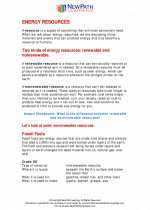
 Worksheet/Answer key
Worksheet/Answer key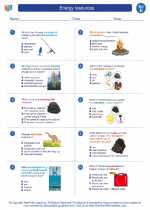
 Worksheet/Answer key
Worksheet/Answer key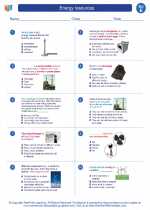
 Worksheet/Answer key
Worksheet/Answer key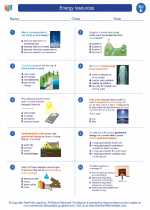
 Vocabulary/Answer key
Vocabulary/Answer key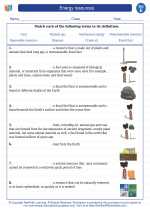
 Vocabulary/Answer key
Vocabulary/Answer key